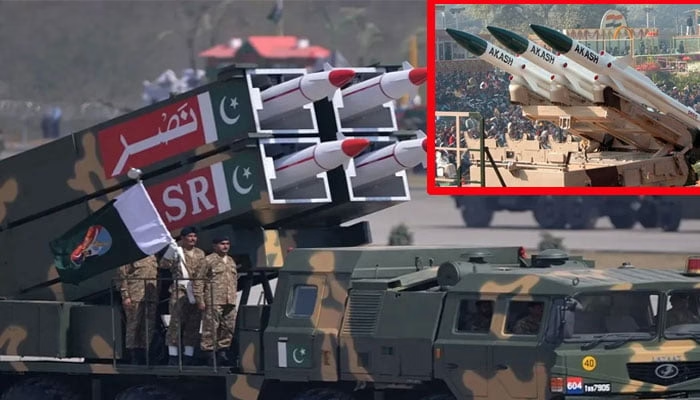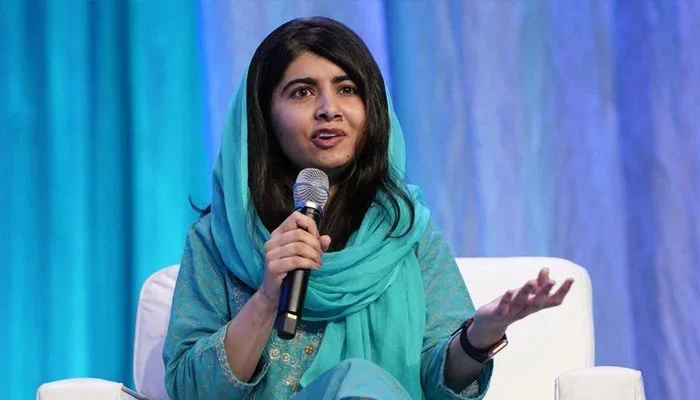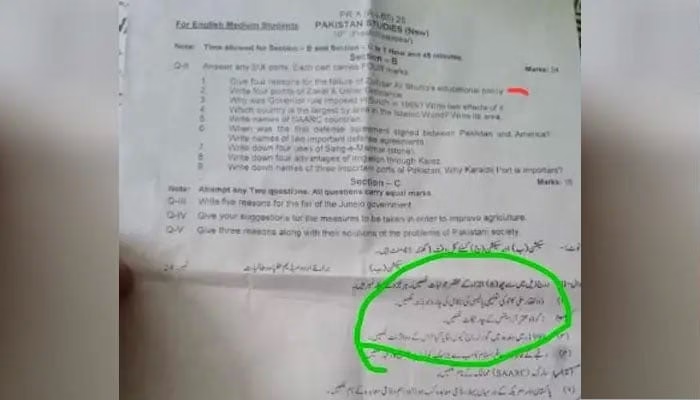Tensions between India and Pakistan—two long-standing nuclear rivals in South Asia—have escalated once again, with experts warning of rising war rhetoric and a fragile peace. Analysts suggest that the two countries appear to be following a policy of a thousand wounds, as hostilities over Kashmir and cross-border tensions continue to shape their military and political landscapes.
Since gaining independence in 1947, India and Pakistan have fought four wars and engaged in numerous confrontations, primarily over the disputed region of Jammu and Kashmir. In today’s volatile environment, military comparisons between the two nuclear states are not only relevant but critically important for understanding regional and global security dynamics.
Rising War Rhetoric and Strategic Concerns
According to Pakistan’s defense experts, while the possibility of full-scale war may have diminished, the consequences of any miscalculation between these two nuclear powers would be catastrophic. Terrorism concerns from India, particularly in Balochistan and Khyber Pakhtunkhwa (KP), remain on Islamabad’s radar, with increased vigilance along sensitive borders like the Line of Control (LoC).
Pakistan’s Ambassador to the U.S., Rizwan Saeed Sheikh, recently remarked that while Pakistan seeks peace, it should not be mistaken for weakness. He warned that any misadventure would be met with a “full-force response,” reflecting the deep distrust that persists between the two nations.
India vs Pakistan Military Strength: 2025 Global Firepower Rankings
According to the Global Firepower Index 2025, India ranks as the 4th most powerful military in the world—just behind the U.S., Russia, and China. Pakistan stands at 12th place, climbing steadily in global rankings due to improvements in manpower, arsenal, and strategic positioning.
Meanwhile, the Stockholm International Peace Research Institute (SIPRI) reports that India is the 5th largest defense spender, allocating approximately $86 billion annually. In stark contrast, Pakistan’s defense budget sits at around $10 billion, nine times smaller, yet enough to maintain a robust and nuclear-capable military.
Manpower and Military Assets
- Pakistan:
- Active personnel: 654,000
- Parliamentary forces: 500,000
- Reserves: 550,000
- Aircraft: 1,399 (328 fighter jets, 373 helicopters)
- Tanks: 2,627
- Armored vehicles: 17,516
- Artillery: 662 automatic cannons, 2,629 towed guns, 600 rocket launchers
- Navy: 121 ships (8 submarines, 9 frigates)
- India:
- Active personnel: 1,455,550
- Parliamentary forces: 2,527,000
- Reserves: 1,155,000
- Aircraft: 2,229 (513 fighter jets, 899 helicopters)
- Tanks: 4,201
- Armored vehicles: 148,594
- Artillery: 3,975 guns
- Navy: 293 ships (2 aircraft carriers, 18 submarines, 14 frigates)
India also has a substantial logistical edge, with 311 airports, 1,859 merchant ships, and 56 major ports and terminals—compared to Pakistan’s 116 airports, 60 merchant vessels, and just 3 major seaports.
Nuclear Capabilities: A Delicate Balance
As of SIPRI’s June 2024 report, India possesses 172 nuclear warheads, slightly more than Pakistan’s 170—marking the first time in 25 years that India has overtaken Pakistan in nuclear stockpile size.
- India’s nuclear triad includes:
- Fighter jets
- Land-based ballistic missiles
- Submarine-launched missiles
- Pakistan’s nuclear capability features:
- Aircraft-based systems (F-16s, JF-17s, Mirage V)
- Land-based missiles
- Sea-based cruise missiles like Ra’ad (Hatf-8) with a range of 350–600 km
These developments have significant strategic implications. Pakistan’s ongoing efforts to enhance air-launched cruise missile capabilities are aimed at reinforcing its second-strike potential.
Expert Opinions: War Unlikely, But Risks Remain
Retired generals and strategic analysts hold differing views. Lt. Gen. (retd) Nasser Janjua believes the door to war is closed,highlighting that any conflict would result in total destruction. However, he has also previously warned about the real threat of nuclear conflict in South Asia.
Major General Ijaz Awan doubts the possibility of missile exchanges but remains concerned about Indian surgical strikes or proxy attacks, especially in border provinces. Lt. Gen. (retd) Ghulam Mustafa emphasizes Pakistan’s readiness and operational capability to defend against aggression.
Peace or Peril?
While both nations claim to seek dignified peace, the ever-expanding military arsenals, escalating defense budgets, and public war rhetoric suggest otherwise. With both countries possessing nuclear capabilities and deep-rooted political hostilities, any escalation—intentional or accidental—could spark a devastating conflict not just for South Asia, but the entire world.



